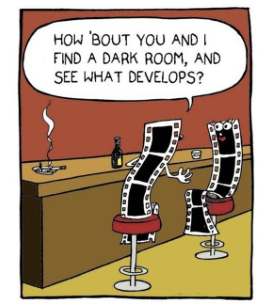This really isn't news. It was first reported by the folks in Arkansas several months ago when they found "Clean" Line marketing their Plains & Eastern "Clean" Line to eastern utilities as a way to ship fossil fuel power between regions and expand its market.
Now "Clean" Line admits its Plains & Eastern project will only carry wind energy an average of 60% of the time, and is marketing the other 40% of its capacity as an arbitrage opportunity to be resold to shippers of other kinds of power.
"Clean" Line is so desperate for customers right now, they don't care what the line is used for, as long as someone, anyone, buys some capacity.
Let's take a look at Mario Harturdo's recent presentation at a United States Association for Energy Economics conference. He expounds on the Mid-South and Southeast's "strong demand for renewable energy." Except that can't be right. If there was a "strong demand" then maybe "Clean" Line would have had customers pushing and shoving to get in line to purchase its capacity for years. Instead...
Here's "Clean" Line's "business model."
Converter stations function as on- and off-ramps; generators connect to the on-ramp and load- serving entities receive low-cost wind power at off- ramps
Clean Line will sell transmission service to shippers via long term transmission contracts - Those who use the line, pay for it
Clean Line Energy has lined up firm commitments for about 100 MW thus far, but it has term sheets for more than 3,500 MW that outline key terms for negotiating with customers following DOE’s decision, Kottler told TransmissionHub.
Although the project has a couple agreements with utilities to take wind power through the transmission line if it is built, many utilities and interested companies have been waiting for DOE’s ruling before making such commitments, Michael Skelly, president of Clean Line Energy said during the March 25 conference call.
“We’re seeing vast and strong indications of interest” and Clean Line Energy will firm up commercial support for the project in the coming days and weeks, with the DOE decision an essential part of moving those discussions along, Kottler said.
Many parties in the Southeast have been waiting for DOE’s decision to reach a deal with wind project developers, Skelly said during the conference call. During a 2014 solicitation, more than 15,000 MW of wind projects expressed an interest in using the Plains & Eastern project to move energy to markets in the South and Southeast, he said.
So, "Clean" Line seems to have changed the product they're marketing to appeal to a wider customer base. Instead of marketing itself as a "clean" 100% wind energy transmission line, now the company claims it will be "clean" only 60% of the time.
Plains & Eastern can transport market power when the wind is not blowing
Average line utilization from wind power will be around 60%
Remaining capacity available for SPP market power delivery to MISO or PJM
Possible use of unused capacity:
• Solar
• Arbitrage opportunities
And of course it means the name "Clean" Line is no longer honest. I think we need to help them come up with a new name for their company so they can rebrand. How about "60% Clean" Line? or "Really only half-Clean Line, because we always exaggerate"? Maybe they should go with the simpler "Rich investors' cash toilet"? I've even got the perfect slogan - "Flush your climate change guilt away and cleanse your soul!"
And let's talk about that arbitrage thing... "Clean" Line thought it was so special, it gave arbitrage its own page in their USAEE presentation. What is arbitrage?
the simultaneous buying and selling of securities, currency, or commodities in different markets or in derivative forms in order to take advantage of differing prices for the same asset.
Arbitrage opportunities exist between RTOs that are connected through P&E even when including additional transmission service
Utilizing unused capacity to take advantage of these arbitrage opportunities create additional value to the owner of the transmission capacity
Market power arbitrage could yield up to $60 million a year, assuming perfect execution on unused capacity up to 1000 MW of OK-TN service and 500 MW of OK-AR service over the entire project
Positive market power price differentials are valuable when delivering SPP power to PJM or MISO, whichever is higher priced, including non-firm transmission costs and losses, and negative differentials are valuable when delivering PJM or MISO power, whichever is lower priced, to SPP including non-firm transmission costs and losses
"Clean" Line's presentation demonstrates that it's nothing but a cash cow dressed in a green sheep costume. And it's also an admission that this company is still having a very hard time finding customers for its pipe dream.
"Clean" Line will never happen without customers. Despite the company's claims that it is "negotiating" and "building" its project, it can't build anything until it has customers. That was one of the significant conditions in the DOE's "Participation Agreement." The DOE requires the company to have firm customers (as opposed to hypothetical "interest" or open ended "contracts" that allow escape) before DOE will participate in land acquisition. This means that "Clean" Line is on its own acquiring easements, and the vast majority of landowners have refused to grant easements. Only after Clean Line has firm customers will the DOE attempt to negotiate with landowners voluntarily. My understanding is that landowners will have a whole new opportunity to negotiate directly with DOE before eminent domain use is even considered. Clean Line is stuck for now, because it has no authority to condemn property (and neither does the DOE, according to the lawsuit filed by Arkansas landowners).
And speaking of the Participation Agreement, it sort of looks like Clean Line's 60% "clean" admission violates the Agreement.
8.27 Renewable Energy Transmission. At any time during which any Transmission Services Agreements are in effect, the Clean Line Entities shall use all commercially reasonable efforts to ensure that at least 75% of the total Electrical Capacity covered by all Transmission Services Agreement that are then in effect to be covered by Transmission Services Agreements used for the transmission of renewable energy resources; provided that, to the extent the transmission of energy from non-renewable resources is required by Applicable Law (including pursuant to any open access tariff rules), such events would not render the underlying Transmission Services Agreement from being disqualified toward the 75% threshold.
Instead of focusing on the real problem of Clean Line's lack of customers, the company is dishonestly trying to make landowners think its project is being built so they will feel trapped into signing easement agreements.
"Clean" Line's lack of customers makes it dirtier and dirtier with every day that goes by.


 RSS Feed
RSS Feed